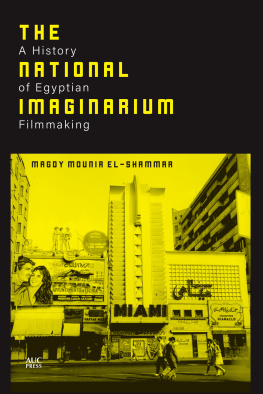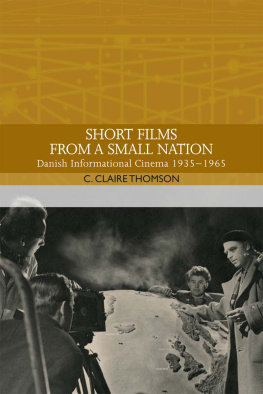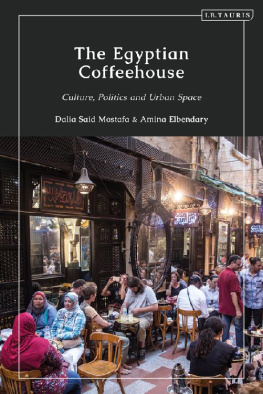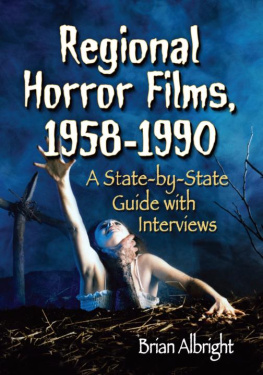
THE
NATIONAL
IMAGINARIUM
THE
A History
NATIONAL
of Egyptian
IMAGINARIUM
Filmmaking
MAGDY MOUNIR EL-SHAMMAA
The American University in Cairo Press
Cairo New York
This electronic edition published in 2021 by
The American University in Cairo Press
113 Sharia Kasr el Aini, Cairo, Egypt
One Rockefeller Plaza, 10th Floor, New York, NY 10020
www.aucpress.com
Copyright 2021 by Magdy Mounir El-Shammaa
All rights reserved. No part of this publication may be reproduced, stored in a retrieval system, or transmitted in any form or by any means, electronic, mechanical, photocopying, recording, or otherwise, without the prior written permission of the publisher.
ISBN 978 977 416 972 4
eISBN 978 1 649 03039 9
Version 1
For Tricia, Sofia, and Zane
CONTENTS
TABLES AND FIGURES
Tables
Figures
ACKNOWLEDGMENTS
This work is the culmination of many years of work, and there have been many along the way that made it possible. Firstly, I want to thank those professors who have encouraged my intellectual development, even when we disagreed, including the late William Brenner and Fouad Ajami, as well as Ira Lapidus, Yahya Sadowski, and Soli Ozel. A special thanks goes out to James Gelvin, my dissertation advisor and mentor, who perhaps taught me the most.
Significant support was provided during the earliest part of this work at the dissertation stage by the UCLA History department, which funded my first year of research in Egypt, as well as the Binational Fulbright Commission in Egypt, which provided invaluable local support during my second year of research, generously funded by a Fulbright-Hays Doctoral Dissertation grant. The University of Alberta History & Classics department as well as the Middle East and African Studies program provided further support in the latter stages of this project.
I would also very much like to acknowledge the incredible support I received from The American University in Cairo Press, including Nadia Naqib who shepherded and lent great support for the manuscript, as well as Nadine El-Hadi and Noha Mohammed whose diligent copy edits were very much appreciated, as well as the many others unknown to me who worked assiduously behind the scenes to produce this book. A special acknowledgment is likewise extended to the anonymous reviewers whose critiques and suggestions made the manuscript a better work.
I want to also thank my friends and colleagues for their support over the years, whose discussions and critiques helped shape this work, and whose friendship made this long journey more tolerable: Andrew Gow, Iman Mersal, Michael Frishkopf, Shawki and Patricia El-Zatmah, John Iskander, Alexander Chandler, Madison al-Abbas, William Murray, Hasan Hussein, Awad Awad, Afshin Marashi, and Maged Mikhael.
Last but far from least, I am incredibly thankful and greatly indebted to my family for their tireless support and unceasing encouragement: my wife Tricia, my children Sofia and Alexander (Zane), my mother Margaret, my late father Mounir, and my brother Hatem.
PROLOGUE: THE NATIONAL IMAGINARIUM
Blessed by seemingly endless sunshine, filmmaking found a fertile ground in Egypt more than a century ago. The abundant natural light made possible many hours of outdoor shooting, a vital requirement for early European filmmakers drawn to Egypt, as did the locals who soon took up the art. This neophyte community of artists and the industry they begat is memorialized in fading photos, framed and hung on the equally aged walls of the famed Caf Riche in downtown Cairo. There is a sense of apogee and decline steeped in this cafs nostalgia for Egyptian films of the black-and-white era, a Golden Age still fondly recalled bynow mostly elderlyviewers, not unlike the patrons and clientele of the famed caf. This is understandable. The stars and directors on the wall behind the managers deskin the curiously unused, wood-paneled main dining roomsignified a period when Egyptian films, and the local filmmaking industry as a whole, dominated the local and regional market, and regularly attracted international acclaim. Layla Murad, Anwar Wagdi, Naguib al-Rihani, Faten Hamama, and Shadia are but a very few of the names and faces that dominated this industry, this ages silver screen, and the yellowing walls of a faded caf, off a downtown Cairo square.
Next page







